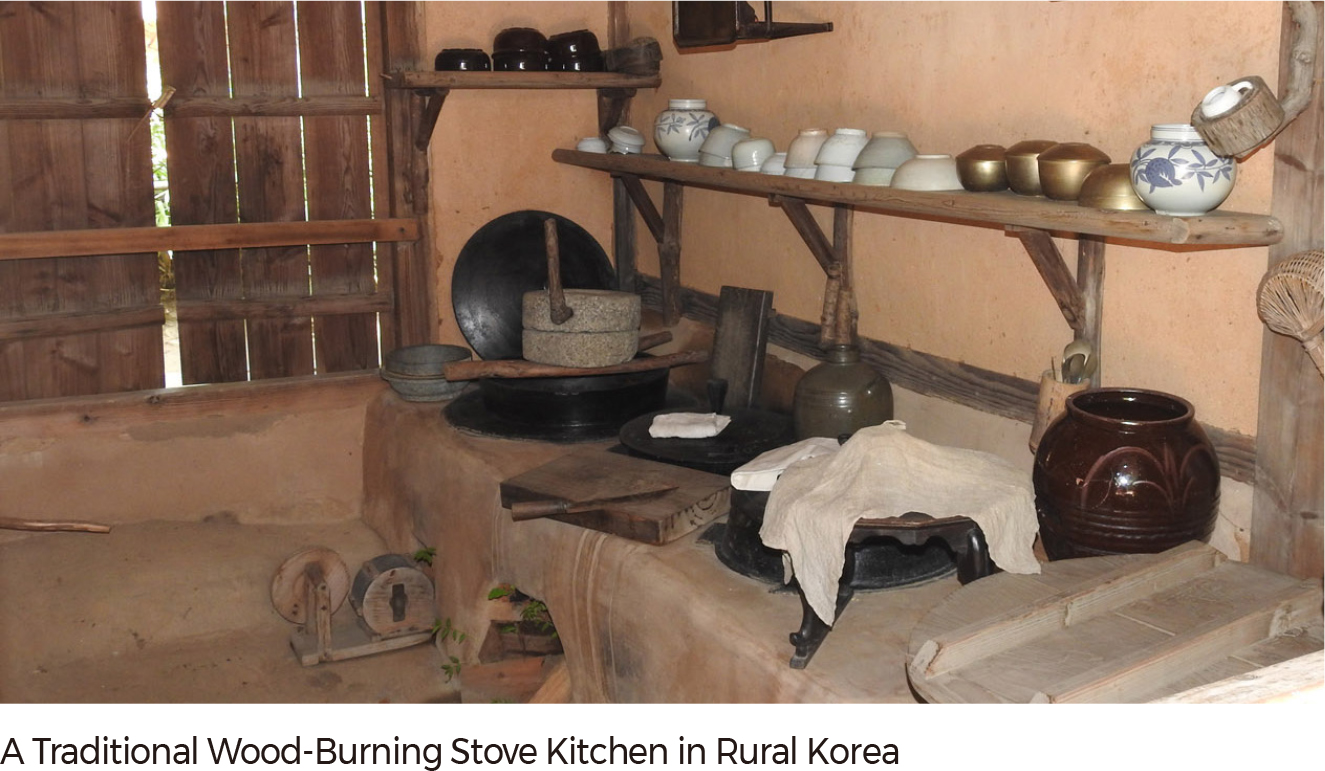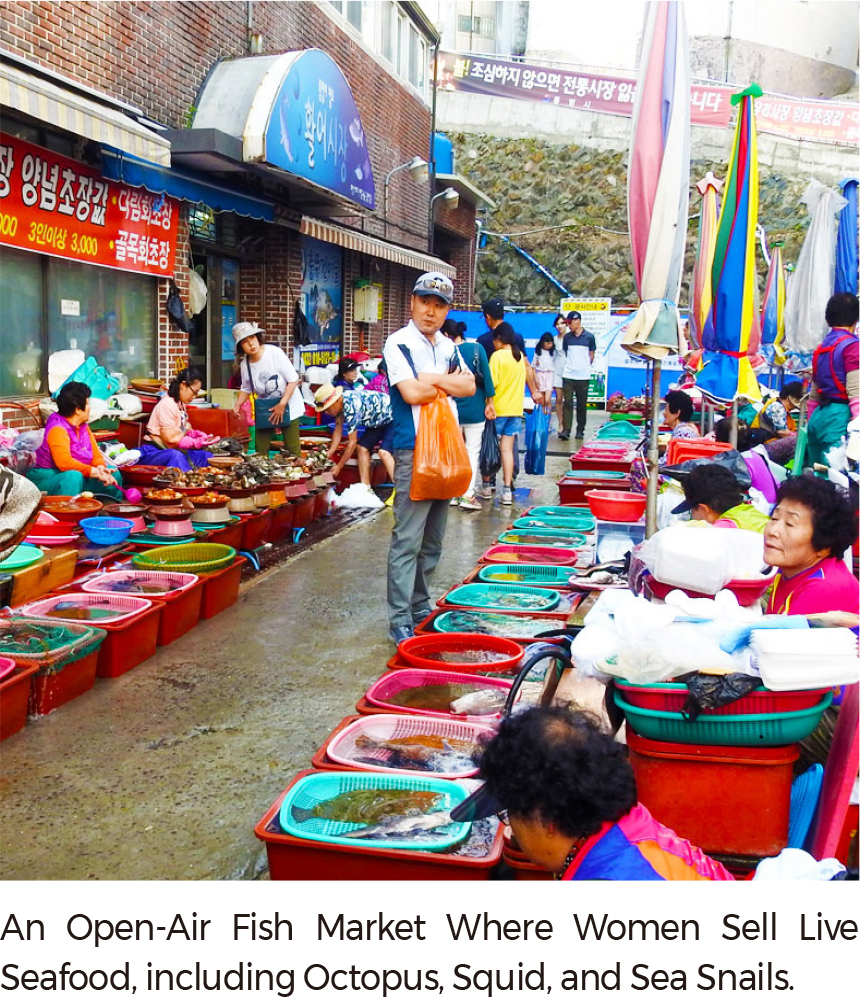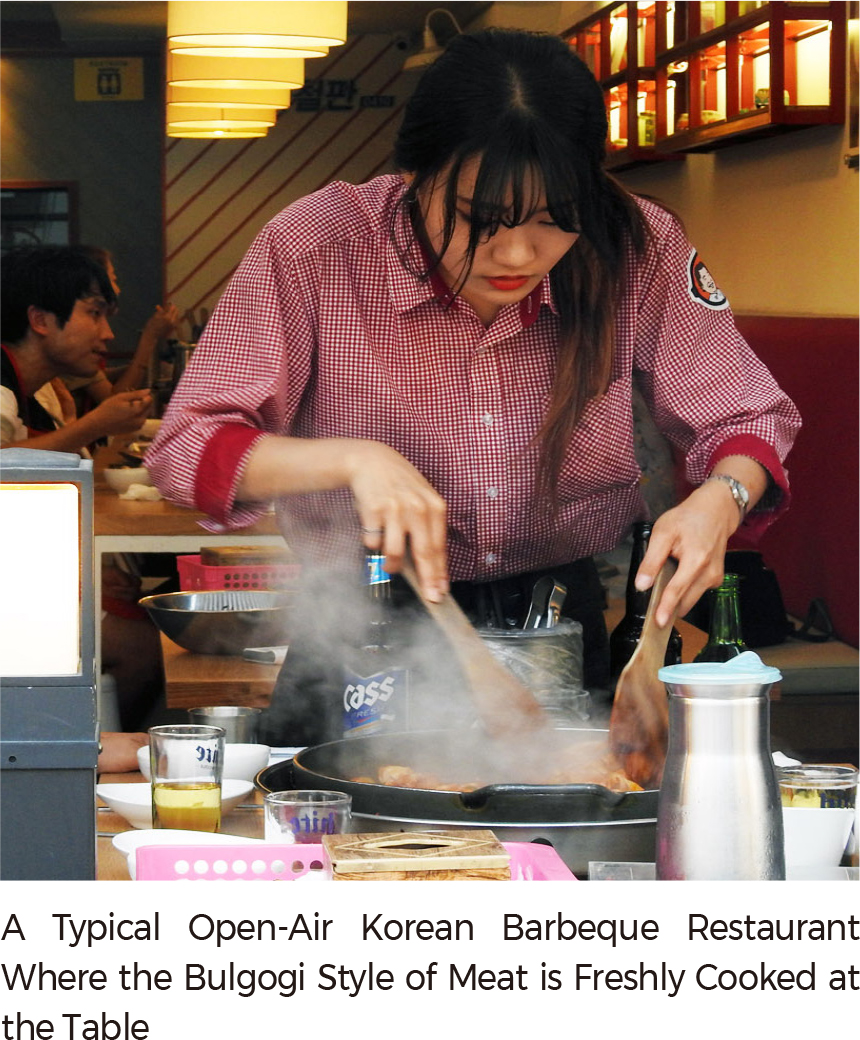Comprehensive Edition 2022
Korean cuisine is known and loved around the world for its distinctive flavors and spices. The Korean people have developed a diverse and unique food culture that dates back to ancient times. Evidence about early food practices in Korea can be gleaned by studying archaeological remains of carbonized grains and shell mounds. Ancient artifacts such as fishing tackle indicate that seafood has long been an important part of the diet. The most important grain in the Korean diet has been rice (bap, in Korean). Like many Asian countries in which rice has been a main source of carbohydrates, Korea has worked hard on land reclamation and securing a water supply to cultivate rice. Various reservoirs from ancient times show the long tradition of rice cultivation.
Due to a public health campaign in the 1960s and 1970s encouraging people to consume mixed grains, there was a rapid increase in the consumption of bread and noodles. As a result, rice and wheat are now the two major grains that Koreans consume, with a large portion of the wheat being imported. Recently, rice consumption has decreased due to rapid changes in diet and increased interest in health. The contemporary Korean diet is largely characterized by a reduction in rice consumption and an increase in the consumption of vegetables, fruits, meats, fish, and dairy products.
One distinct feature of Korean food culture is the development of fermented food, such as kimchi, a dish of salted and fermented vegetables. Fermenting was initially used as a method to preserve vegetables for use throughout the winter. Various Korean pastes and sauces are a type of fermented food used for flavorings, such as Gochujang (red pepper paste), Doenjang (soybean paste), and Ganjang (soy sauce), which were traditionally fermented and consumed in individual households. Recently, with intensified urbanization and a desire for eating outside, especially in the urban areas, an increasing number of households purchase and consume Kimchi and Korean pastes and sauces that are commercially available. In addition, more platforms sell fermented food online. As a result, Korean fermented food has gained popularity worldwide, and global awareness of foods such as Kimchi and Gochujang has increased.
Diets and dining habits are changing in Korea. With more immigrants and foreign residents now living in Korea, many ethnic foods from overseas are being introduced and sold, and creative fusions of foreign and Korean food cultures are being developed.
Korea imports a range of ingredients and processed foods, including agricultural, livestock, fish products, and grains. These are consumed as both staple foods and snack foods; for desserts; and as refreshments such as tea, coffee, and alcoholic beverages. Most wheat for human consumption comes from the United States and Australia, while wheat for animal feed comes from Ukraine and Romania. Rice production is now self-sufficient due to the changes in dietary culture. However, Korea continues to import rice from many countries, including China and the United States, because of the mandatory import quota. It is sold to be used in processed foods. Beans, including soybeans, are imported from the United States and Brazil. Corn is imported mostly from Serbia, the United States, and Brazil. Biscuits, snacks, pies, and bread are imported from China. Candies are mostly imported from European countries such as Germany, Spain, and Belgium. Chewing gum is dominantly imported from Malaysia and Indonesia.
With the growing trend of eating out, various kinds of restaurants are becoming more popular. In addition to the familiar Korean, Chinese, Japanese, and Western restaurants, newer eateries include bakeries, pizza-hamburger-sandwich shops, chicken restaurants, coffee shops, and snack and Gimpbap restaurants. These types of restaurants have steadily increased in number in recent years, and many are franchised. In Korea, coffee consumption per capita is much higher than the global average and continues to grow. As a result, the annual import volume and amount of coffee are gradually increasing. Many coffee beans are imported from Central and South American countries such as Brazil; Southeast Asian countries such as Vietnam; and African countries such as Ethiopia. |









